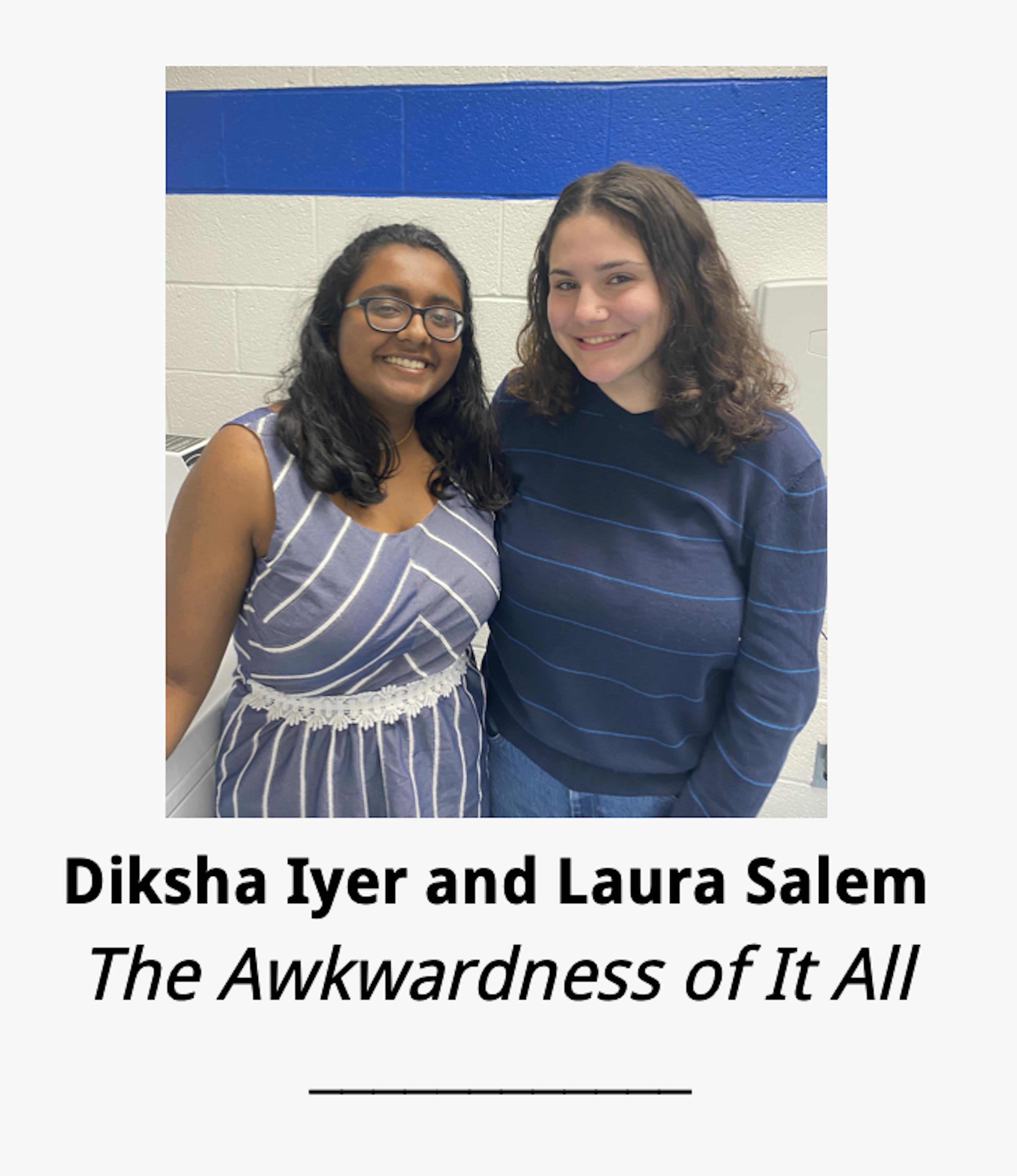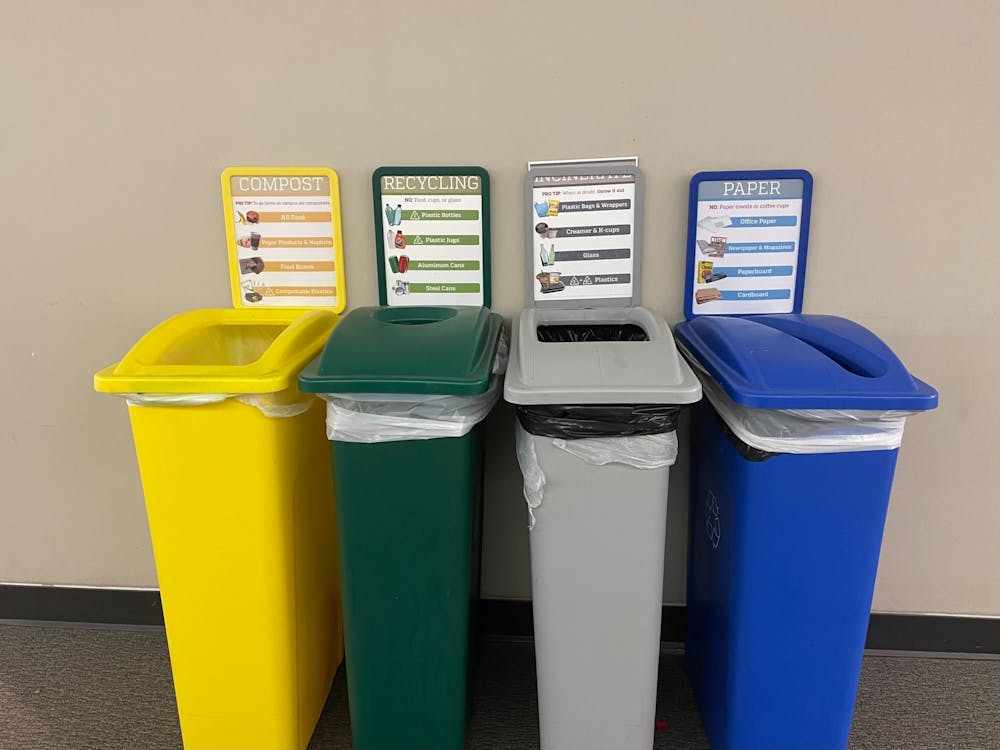
Hopkins presents the unified aim of managing waste and reducing any harmful release of chemicals into the environment. The University encourages all members of the faculty and student body to participate in this goal in the name of sustainability.
However, as students, we feel that Hopkins has not achieved the goals of waste management and clean living that it has set for itself. This is not necessarily due to a lack of trying but rather the awkwardness Hopkins has injected into the normally private process of waste disposal.
We, Laura and Diksha, are here to air our grievances surrounding the University’s waste disposal process, mainly influenced by the terribly awkward experiences we have had with it that we have never forgotten.
Back at home, the options for disposing our trash are often different, and the rules as for what belongs in each category vary as well. Because of our unfamiliarity with the trash disposal system, we often feel overwhelmed and anxious when trying to decide which bin to place our trash in. Our lack of knowledge of the disposal process causes us to end up sorting our trash differently each time. Sometimes we get so overwhelmed we place all of our waste in the incinerate bin in hopes of not contaminating the others.
In Baltimore, glass is unable to be recycled, which is different from our recycling experiences at home in Connecticut and Michigan. At home, we simply wash our glass and place it in the recycling bin and never think about it again, but here that is not an option. Apparently, we are supposed to simply put our glass in the incinerate bin, but that feels completely wrong. It will take us some time to get used to this drastic change in our life as we navigate the recycling rules here.
One of the most overwhelming decisions is deciding where to place our trash from the Fresh Food Café (FFC) or Nolan’s. It has recently come to our attention that many Hopkins students are unaware of the compostable nature of the food cartons from the dining hall. This encourages them to throw the cartons in the trash since they do not want to spend time sorting the food out of the carton into the compost bin. We feel as though everyone is judging the way we sort our trash (in this case, our unfinished food) into the bins.
We do acknowledge that Hopkins has signs above several trash bins throughout the library, for example, that explain the proper methods for disposal. But if you really know us, you know that we overthink these signs, and no matter the amount of guidance offered to us we still manage to do it wrong. There’s no helping us in this situation.
We have noticed that the bins with the signs are abnormally small, and we cannot shove everything that we have to dispose of inside the bins even if we were able to sort it effectively in the first place. Even the larger garbage cans around campus are frequently overflowing with trash, so we have to cart our trash around with us everywhere until we find a proper spot to dispose of it. It’s quite the difficult task and we don’t enjoy it at all (the awkwardness really gets magnified when you are trying to shove a box from the FFC into a trash can at the library and the box won’t fit).
It’s our greatest wish to someday be able to accurately sort our trash and be more confident in the waste management system at our University. Maybe then we can call ourselves “grown-ups.”
We never know what to do with cardboard boxes. This is a huge problem with us, actually. Though there are clearly outlined instructions, they manage to increase the confusion within us at every turn. In AMR II, where Laura resides, there is a sign that tells us to break down the cardboard boxes and “place them here.”
We know how to break down the boxes (it’s the source of many paper cuts), but it’s the word “here” that causes the most confusion between us. What does “here” mean? We don’t mean in a philosophical sense, but truly want to know where we should place the broken-down boxes.
For example, should we place the boxes inside of the recycling bin, or next to the garbage can? Are we causing a huge inconvenience if we do it the wrong way? Additionally, what happens when the bigger boxes do not fit inside of the recycling bin? How can we properly dispose of them so that they aren’t clogging up the entire hallway and making other people maneuver their way around the boxes to exit the dorms?
These types of questions build up in our heads, causing us to second guess ourselves at all moments. So when you see us having an existential crisis by the various colored garbage bins, you will definitely know why.
We are both the types of people to magnify any awkward situation into something quite bigger than it actually is, so throwing away our trash has become something to congratulate ourselves on getting through. After sorting through our trash, going through the various hoops and obstacles to dispose of it and making it back to our dorms without any embarrassing experiences, we can definitely kick back and reward ourselves with an hour or five of Netflix.
Laura Salem is a freshman from Tolland, Conn. studying Psychology and History. Diksha Iyer is a freshman from Dearborn, Mich. studying Public Health and Neuroscience. Through their differing perspectives, Laura and Diksha stumble their way through their college experience, one step at a time.





